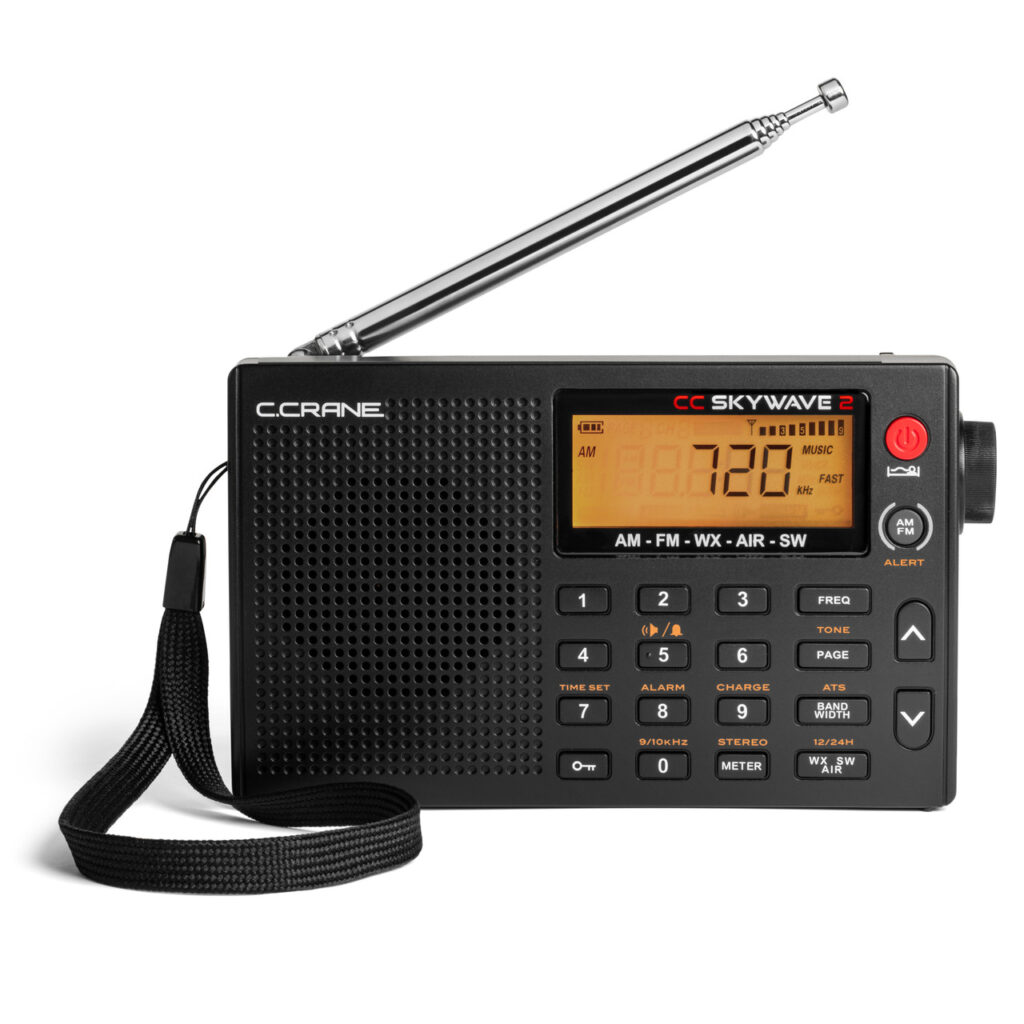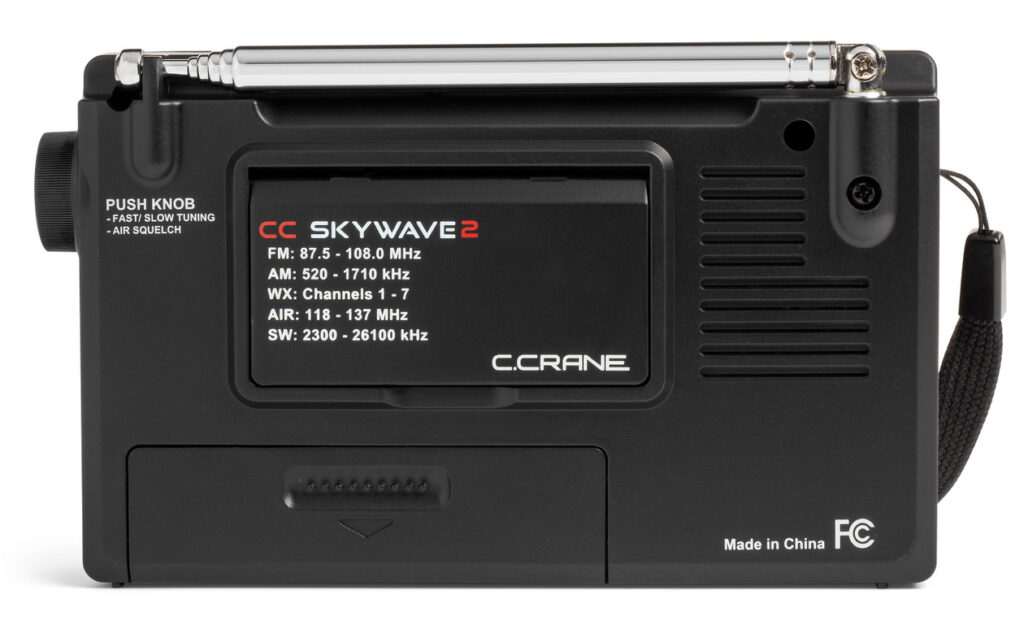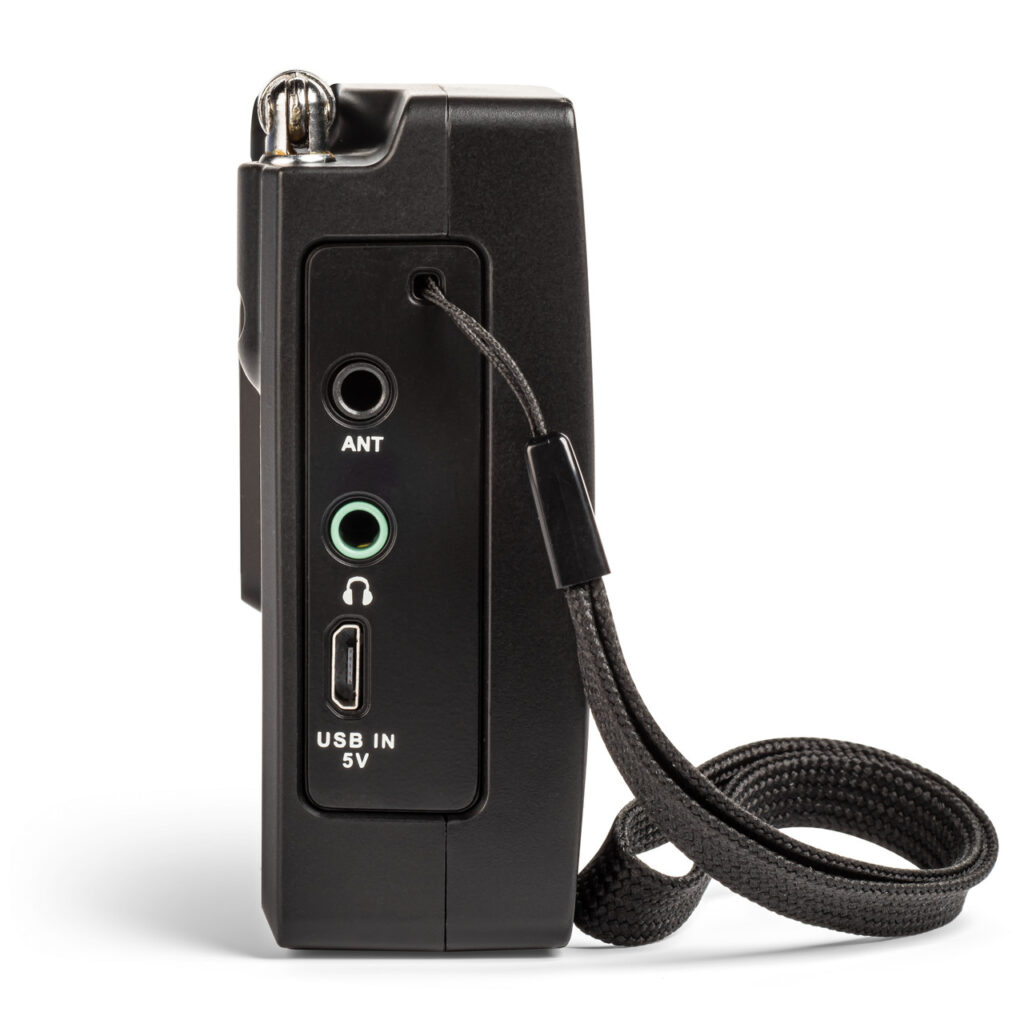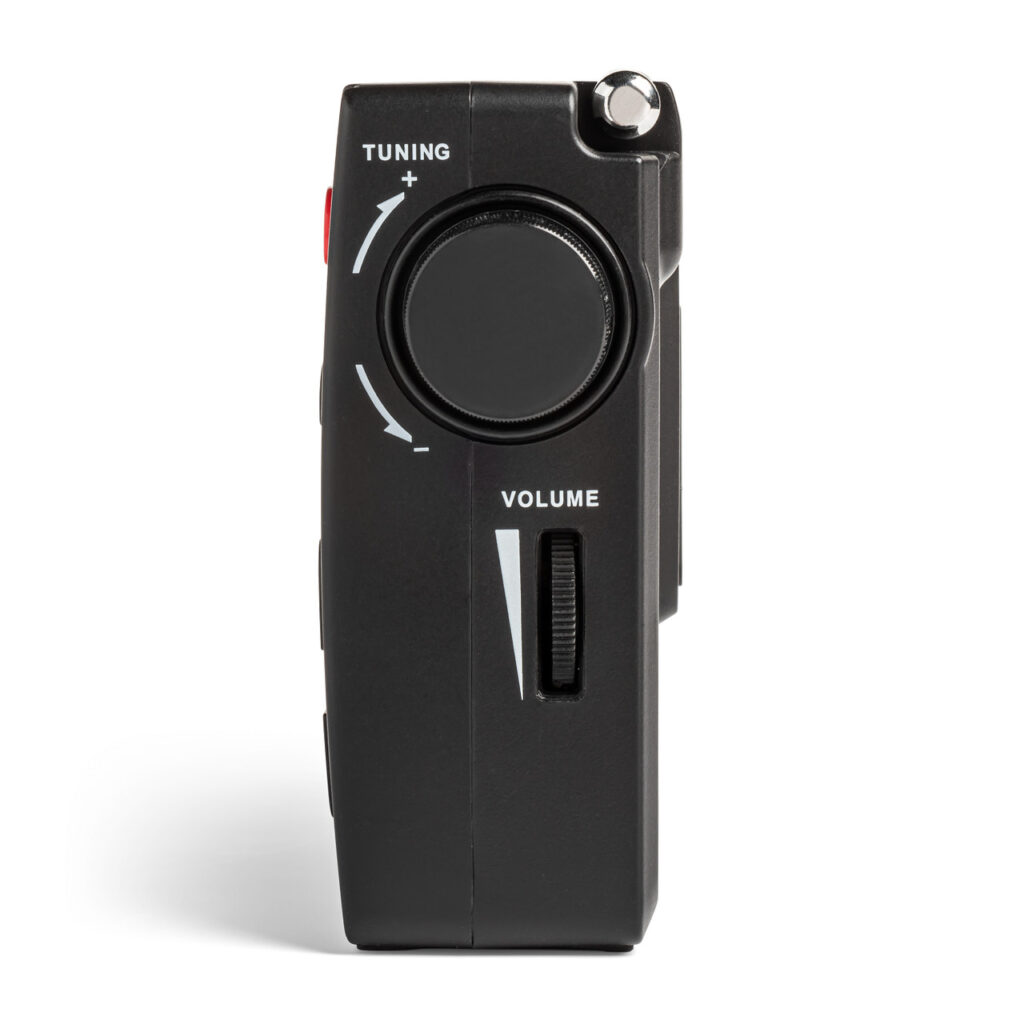By Jock Elliott, KB2GOM
A software glitch at a power station, a tree branch rubbing against a transformer, a geophysical incident, a weather event, even a civil society misadventure . . . It doesn’t take much for things to rapidly go to blazes. So what do you need when Really Bad Things happen?
Back in the 1970s, Colonel John Boyd, an air warfare strategist, came up with the idea of the OODA loop. Originally designed for air combat, the OODA stands for: Observe, Orient, Decide, Act. In other words, see what’s going on, understand how it relates to your situation, figure out what to do, then do it. OODA . . . got it?
So when really bad stuff happens, once you get clear of immediate physical danger (if any), you (or me or anyone involved) need to do your OODA loop: see what’s going on, understand how it relates to your situation, figure out what to do, then do it.
And to execute your OODA loop, you need information, right?
Soooo, when the lights are out, the internet is down, and maybe cell phones aren’t working, you need an emergency radio to find out what’s going on. Rob, W4ZNG, endured three weeks without electricity on the Mississippi gulf coast as a result of Katrina. In Rob’s case, during Katrina, all of the local broadcasters were wiped out. There was a local low-power FM broadcaster who got permission to increase power to 1,000 watts and was broadcasting where to get food and water. There was a New Orleans AM station that was on the air, but all of its coverage was “New Orleans-centric.” After a few days, some local FM broadcaster, working together, cobbled together a station that they put on the air and began broadcasting news. Rob also began DXing AM stations at night to get additional news. I don’t think it is an exaggeration to say radio was Rob’s lifeline to what was going on.
So, at the most basic level, an emergency radio needs to receive AM and FM stations. If you live in the U.S. or Canada, you also want NOAA weather radio channels, and, if things are really horrible, the ability to receiver shortwave radio might be useful.
Recently I had a look at an excellent candidate for an emergency radio. CCrane has brought out a new and improved version of their super-versatile pocket-sized Skywave radio, and they sent me one for review without charge.
The new radio, the CC Skywave 2, covers FM from 87.5-108.0 MHz, AM from 520-1710 kHz, National Weather Radio Channels 1-7, air band from 118-137 MHz, and shortwave from 2300 to 26100 kHz. Small enough to fit in a shirt pocket, the Skywave 2 measures 3 inches high, 4.75 inches wide, and 1.1 inches deep and weighs about five and one-half ounces before you insert 2 AA batteries. (It can also be run off an optional CCrane power adaptor that can charge optional NiMH batteries. The manual warns: DO NOT USE LITHIUM BATTERIES).
According to CCrane, improvements to the Skywave 2 include a new micro-USB connector for external power and battery charging, a better speaker with slightly more amplification, circuit noise reduction, long feet for better stability, and a socket for plugging in an optional wire antenna adaptor available from CCrane.
I found the Skywave 2 really easy to operate. At the simplest level, select a band, then press one of the up or down buttons, and the Skywave 2 will scan to the next strong station. There is also an ATS (automatic tuning system) that programs all receivable AM, FM, or shortwave stations to memory buttons. Just select the band you want (AM, FM, or shortwave), press the ATS button, and the ATS system will scan the entire band and automatically set all available stations in sequence 1-10. If there are more than 10 stations are available, then the remaining stations will be stored on the next memory page and so forth. Each band has its own set of memories.
Everything is clearly labeled, and a gold label above a button indicates that if you press and hold that button, the function labeled in gold will be activated. If you want to directly enter a frequency (once you have selected the band you want), you must press the FREQ button first, then punch in the numbers. Otherwise, pressing any of the number buttons will activate the memory assigned to that number. To store a station in memory, press and hold any number button for two seconds.
Although I have no equipment for formally measuring things like ultimate receiver sensitivity, I found the performance on all bands to be typical of what I have come to expect of CCrane radios: excellent.
Full points to CCrane for writing a superb manual. In fact, I’ve found that the manuals for all the CCrane radios I have owned or tested have been well-written. I don’t know who is writing those manuals, but a big thumbs-up for clear manuals that are easy to use. The Skywave 2 manual even includes a section on “Hidden Settings” . . . ya gotta love it! Well done.
One other thing deserves mention: the Skywave 2 comes with CC Buds Earphones. I found they fit my ears comfortably and sound great . . . waaay better than the cheap-o earbuds I bought at a big box store.
The bottom line is: the Skywave 2 is a pint-sized powerhouse, and I can easily recommend it for anyone who needs an emergency radio, a travel radio (it has an alarm you can set), a weather radio with alert, or an ultralight MW DXing radio, or who simply wants to have a lot of fun with radio in a small, easy-to-handle package (An aside, listening to air band is pretty entertaining).
I found the performance to be excellent (for the radio’s size) on all bands, comparable to the CCrane Skywave SSB 2 that I own. In addition, with the new model (and the optional adapter), you can now plug in an external long-wire antenna for longer-range reception. That’s just great and could prove really useful.
The chief difference between the Skywave 2 and the Skywave SSB 2 is that the Skywave SSB 2 receives single sideband signals, making it possible for the listener to hear amateur radio and utility signals (like transoceanic flight control) that operate in upper or lower sideband mode. In addition, the SSB 2 includes (as well as the radio, carry case, and ear buds) a shortwave antenna and the CC wire terminal antenna adapter. In addition, the SSB 2 also has some software capabilities not available on the Skywave 2. For example, on the SSB 2, the Automatic Tuning System can also be used on the AIR band, and once AIR band frequencies have been stored, the SSB 2 can scan them. You can find my review of the Skywave SSB 2 here: https://swling.com/blog/2022/11/checking-out-the-new-c-crane-cc-skywave-ssb-2/
To conclude: I sincerely hope you never have to “do” your OODA loop, particularly not when things are going to blazes, but if you do, the CCrane Skywave 2 just might be helpful in getting the information you need. And, in the meantime, it is a very enjoyable radio to use, and I can recommend it without reservation.
Click here to check out the C. Crane CC Skywave 2 at C. Crane.
For more of my musings regarding the CCrane Skywave radios, please consult:
- Jock discovers the joys of ATS tuning with the C.Crane CC Skywave SSB
- C.Crane CC Skywave SSB: Jock adds a correction/addendum to his guest post about ATS tuning
- The two-pocket listening post . . . for when “they” are after you
- The fertilizer hits the fan radio kit
- Jock satisfies his inner radio nerd with a deeper dive into NOAA weather radio
- https://swling.com/blog/2023/05/a-little-barefoot-ultralight-mw-dxing-in-which-my-mental-status-is-questioned/





Have to agree on USB-C. This would seem to have been a necessary upgrade.
Dan . . . and all those concerned about USB-C on the Skywave, I received the following from CCrane:
“On the USB C port for our products. It would take some circuit upgrades and possibly a new MCU which would require a complete new firmware to be written for each product. Another issue could be is there enough room on the PCB to install the new USB C connector. The SSB and Skywave do have room issues. As I recall it was brought up when we made the change to what it is now and it was due to size and additional circuitry requirements that we did not go there.
USB C has 3 different voltages and much higher currents that it can supply and the device that is connecting to it determines the voltage and current levels it uses. ”
Cheers, Jock
Did you notice if they fixed the clock issue in this model? My Skywave SSB runs fast using NiMH batteries and jumps several minutes a month.
SamA,
Sorry, I did not notice that issue.
Cheers, Jock
I have an old lithium battery with 3 leads. The third lead is the programming lead. Along side the battery (cylindrical in shape) there is a metal bracket that has a small micro circuit chip attached to it. This is the programming chip. A rechargeable lithium battery ” remembers ” how it was charged initially . That’s why cell phone manufacturers recommend using the charger that came with the phone and no other.
My first thought was that the OODA loop must be some kind of antenna! ?
Paul,
GRIN!
Cheers, Jock
This is one of the best radios I have ever owned.
Enjoyed your review, Jock.
RE: “Do not use lithium batteries.” It is my understanding that this is not so much a safety issue, but rather one of noise. For standard AAA-, AA-, C-, and D-size batteries, the native 3.7 Vdc of a lithium cell must be down converted to 1.5 Vdc. The process that takes place inside the lithium battery is effectively like that of a switching transformer. It can cause lots of noise. I was able to use them in my Sony ICF-2010 with some success on shortwave, but the batteries cause excessive RFI on medium wave frequencies. Lithium 3.7 Vdc batteries such as #18650 (Tecson PL-880) and #BL-5C (Tecsun PL-330) work just fine, as no internal conversion is necessary.
I think it might be a safety issue to use Lithium. EverReady makes true 1.5 volt lithium AA batteries that do NOT generate any noise. I use them all the time. But they are NOT rechargeable.
I think they are concerned that a user might put a set of these EverReady AA batteries thinking that they are rechargeable. They are NOT rechargeable and would probably be a problem if the user tried to charge them in the radio.
There are rechargeable AA lithium batteries and might be able to use them but only if they are recharged in their external charger. The internal charger on the radio is designed to charge NiMH batteries and does not have the charging protection circuit for use with Lithium.
I’ve never used the rechargeable AA lithium and don’t know if they generate noise or not. I’ve never had any noise problems using the EverReady AA non-rechargeable lithium batteries.
It pays to be cautious with Lithium batteries. And I guess CC Crane is being extra cautious in not recommending them.
73
Bill WD9EQD
Smithville NJ
Bill and Bob,
Thank you both.
Cheers, Jock
We covered the issue of RFI from 1.5V LiIon batteries a bit upstream here. Some have experienced strong broadband noise from the battery’s buck converter while some have not, Perhaps the circuit designs have gotten better but from the 3 brands I have tried it remains a nonstarter for radio.
Mike,
I think the rechargeable AA batteries include the buck converter.
I just did some research on the EverReady Non-Rechargeable and as far as I can tell it does not have the buck converter and natively produces the 1.8 V open circuit voltage. Following is a document on them:
https://data.energizer.com/pdfs/lithiuml91l92_appman.pdf
There are also some you-tube videos of people dismantling the EverReady batteries for the sake of throwing the lithium in a bowl of water and then watching the resulting fire. I do NOT recommend anyone trying this. It can be quite dangerous. From the video, I did not see any buck circuit.
One item – The AA lithium do have a higher open-circuit voltage (1.8) but it quickly drops down. I’ve never had any problems using them on all my electronic devise. But I guess the higher voltage might cause a problem in some cases.
73
Bill WD9EQD
Smithville, NJ
Yes Bill, the higher open-circuit terminal voltage could be an issue for lithium primary AA cells in some devices; ditto for NiZn rechargeables.
I am still puzzled seeing a manufacturer introducing a new or revised product that includes a Micro USB-A port, and not USB-C.
But recent experience with radios and other small electronics having USB-C charging ports gives some insight as to one of the considerations. The XHDATA D-109 is a good example. As USB C-to-C charging becomes standard on many portable devices, the user might automatically asusme they can do the same with a radio like this.
In actual practice USB C-to-C charging remains a crapshoot when using a USB Power Delivery (PD) compliant charger, which does not default to 5V output.
Try this on the D-109 and nothing happens – nada. This is because the XHDATA charging cirucit is not PD compliant, and so the charger does not even see that the radio is there. Plug into a USB-A charger via an A-to-C cable (which has the appropiate sense resistor) and it works.